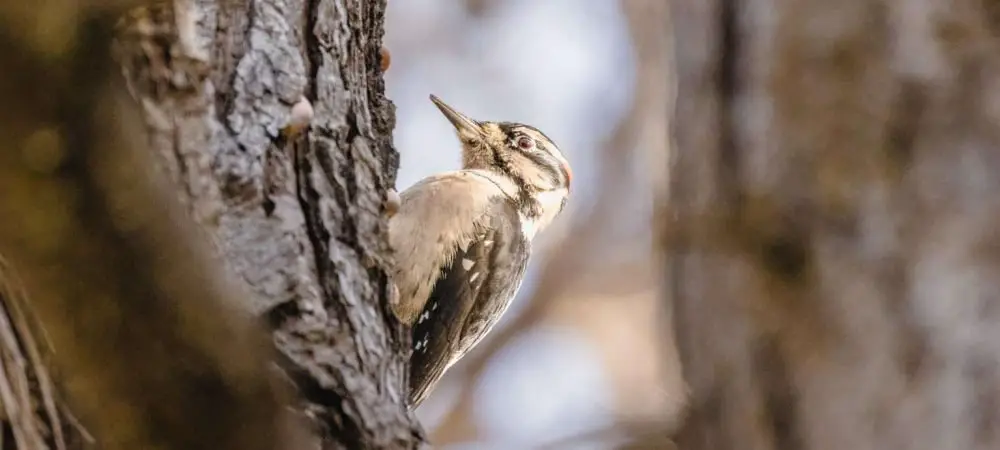
Want to learn more? Take a look at the North American Guide to Woodpeckers
This state is world-renowned for its beautiful state parks and lush wildernesses. Arkansas borders the Mississippi River, causing both a humid and sub-tropical climate.
Arkansas is widely known for its 52 state parks, bountiful landscape, mountains, caves, and rivers.
This unique climate and terrain welcome all types of birdlife such as woodpeckers. Arkansas is home to a cozy 8 species of woodpecker.
You are most likely to see the Red-Bellied Woodpecker, but least likely to see the Red-Cockaded Woodpecker. The following includes a detailed profile of each species of woodpecker.
Take a look at our article on How to Attract Woodpeckers?
What Woodpeckers can be seen in Arkansas?
Table of Contents
1. Red-bellied Woodpecker
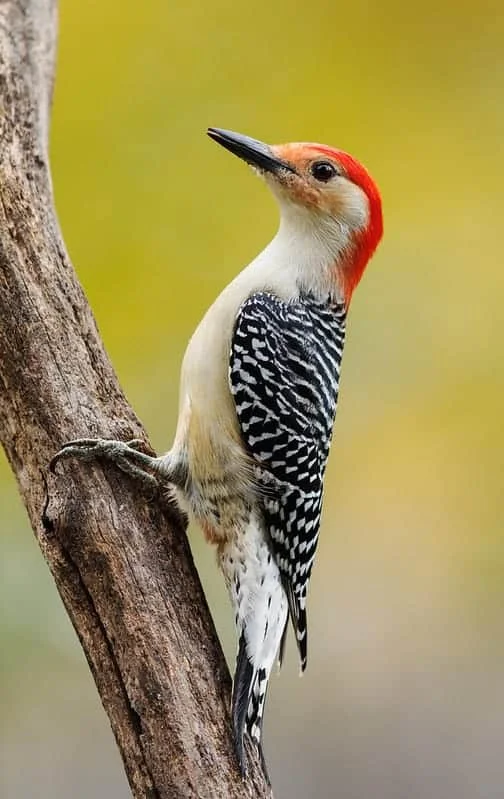
Wingspan
15-18 inches
Weight
2.65 ounces
Life Expectancy
12 years
Diet
Insects
Red-Bellied Woodpeckers are a medium sized bird with bright red heads although they are uniquely named for their bright red bellies.
Red-Bellies display subtle black and white feathers on their backs. These woodpeckers are yearlong residents in the state of Arkansas and take habitat in a wide array of forested areas.
The males in this species often excavate dead trees as nesting sites for their families. Red-Bellies return to the same tree every year.
An interesting courtship display is when males call and tap on the tree to attract its partner. Red-Bellies tend to breed in early winter and late spring.
Their calls include a ‘churr-churr’ sound as well as a rolling ‘kwirrr’ sound. Contrary to other species, Red-Bellied Woodpeckers’ diets include more fruit like wild berries rather than insects.
You can spot these birds “playing” by spontaneously flying among trees or foraging, flying in multiple directions.
2. Downy Woodpecker
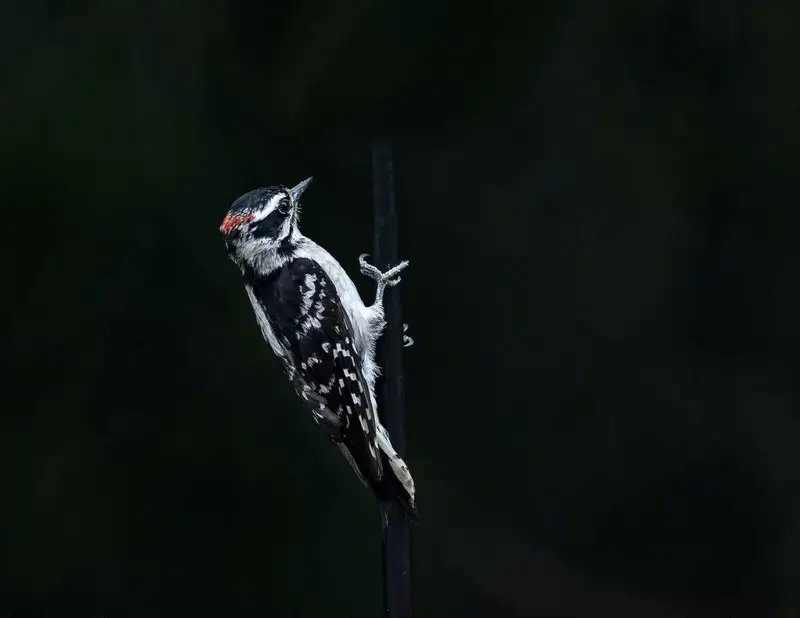
Wingspan
3.27 to 4.13 inches
Weight
0.75 to 1 ounce
Life Expectancy
12 Years
Diet
Insects & Non-insect arthropods
The Downy Woodpecker is known to be the smallest woodpecker species in North America.
They have black bodies with white backs, underbellies, throats, with incredible small white spots detailing their wings.
Adult males also have small areas of red on their heads. Downy woodpeckers are highly expansive, and can be seen mostly in woodlands, willows, and groves.
They regularly make their nests in the cavities of trees or bushes. These birds breed in the early spring as both males and females build their nest.
You can recognize these woodpeckers by their sharp ‘pik’ sounds. Throughout the state of Arkansas, these woodpeckers can be easily spotted in backyards, orchards, woodlots, and parks.
They are often found in backyard gardens visiting feeders, particularly during winter months.
3. Red-cockaded Woodpecker
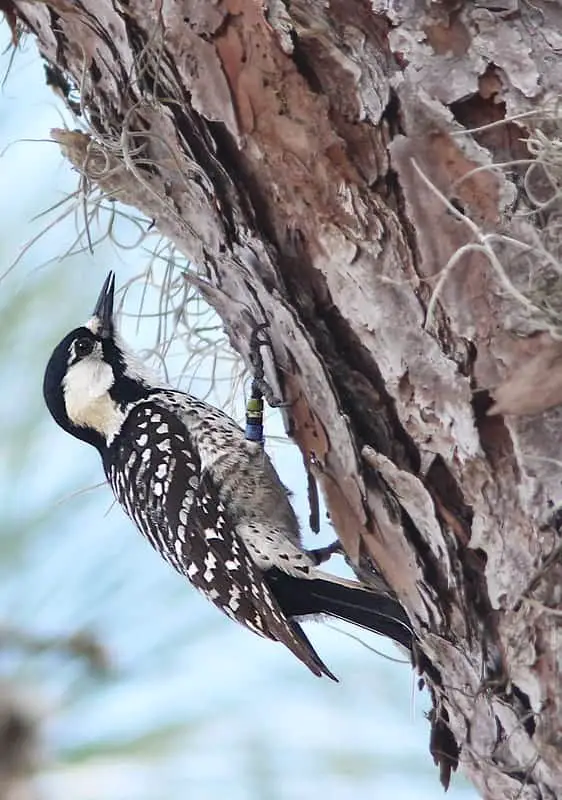
Wingspan
14 inches
Weight
1.5 ounces
Life Expectancy
16 years
Diet
Eggs, insects, nuts, seeds & fruit
Red-Cockaded Woodpeckers are a small to medium sized bird with black and white feathers.
They also have striking white detailing on their cheeks as well as their backs. Adult males display a red streak on each side of the black cap during mating season, but it is sometimes difficult to identify.
These woodpeckers prefer to make their nests in softened trees, and they are the only woodpeckers that make their home in living pine trees.
You can find Red-Cockaded woodpeckers in open pine woodlands and savannas that have larger, more mature pine trees.
You can often find them living in families with monogamous mates. They can be identified by their unique ‘sklit’ call when they are irritated, or their general ‘churt’ call.
4. Hairy Woodpecker
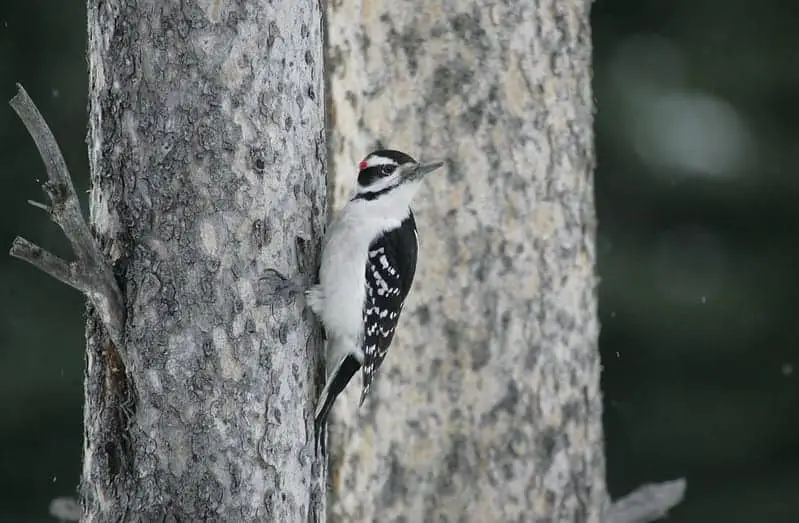
Wingspan
15 inches
Weight
1.4 to 3.4 ounces
Life Expectancy
15 years
Diet
Wood-boring insects & tree sap
Hairy Woodpeckers are medium sized woodpeckers that have dark wings and backs, but pastel colored bellies.
Mature male woodpeckers usually display a reddish-orange patch on their heads. Hairy Woodpeckers like to be in woodlands in medium or large trees where they can readily be found nesting at the main trunks.
Both male and female woodpeckers rapidly drum on trees all year round and they also have a familiar ‘peek’ sound.
A unique characteristic about the males, is their conflict display to warn other woodpeckers.
This display often involves a sharp, high frequency call. Hairy Woodpeckers are typically seen in Arkansas during the winter
5. Pileated Woodpecker
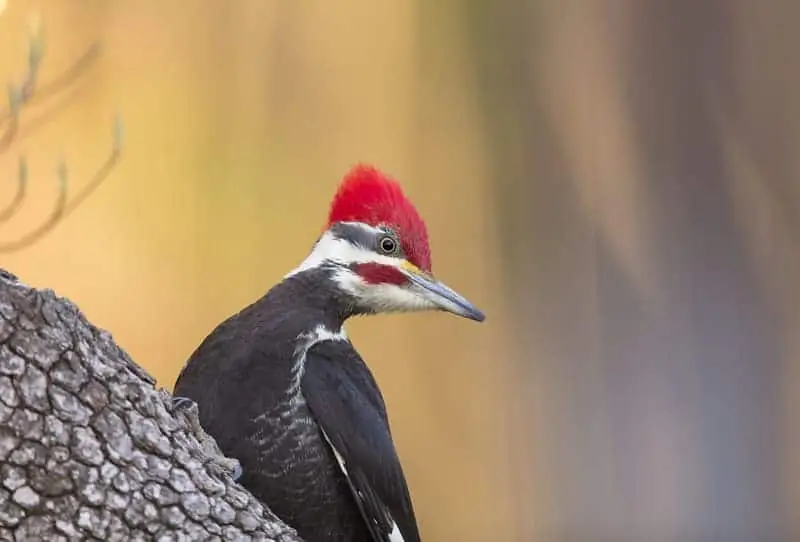
Wingspan
26 to 30 inches
Weight
8.8 to 14.1 ounces
Life Expectancy
13 years
Diet
Fruit, nuts & insects
Pileated Woodpeckers are a large species of bird, in fact, actually, they are one of the biggest and most striking birds that you will see in Arkansas.
They are recognized by their black underbellies, wings, and backs. They also have white stripes on their backs with a notably bright red crest.
Pileated woodpeckers take habitat in more forested areas like coniferous and old woodlands.
They are usually found drumming on dead trees taken for insects and larvae.
These birds breed in early spring and make their nests in tree trunks, lined with leftover wood chips.
These woodpeckers are monogamous, but rarely use the same tree for nesting. You can spot this bird in Arkansas’ mature forests among dead trees.
6. Yellow-bellied Sapsucker
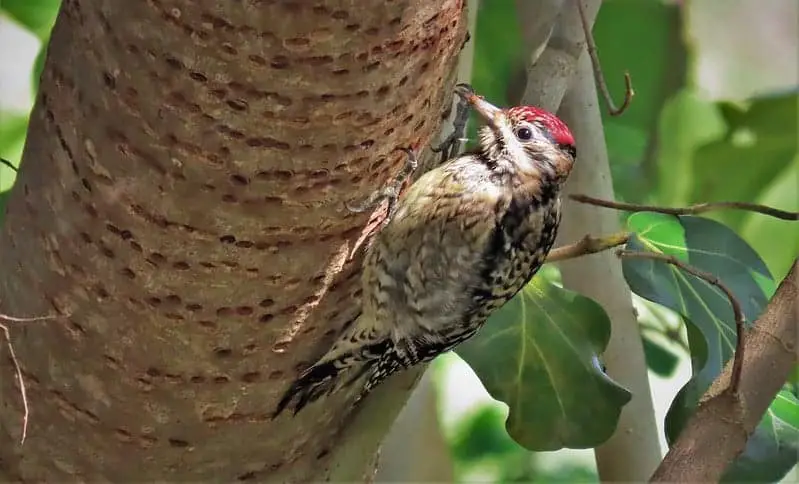
Wingspan
13 to 16 inches
Weight
1.5 to 1.9 ounces
Life Expectancy
7 years
Diet
Tree sap, insects & fruit
Yellow-Bellied Sapsuckers are a medium-sized bird and are widely recognized by the wing stripe that details their shoulders.
Male birds tend to have red or yellow-colored foreheads, and females have a lighter shade of red.
They also have pale yellow underbellies as their name suggests.
It’s worth noting that females have white throats and males have bright red throats.
These species make their home in conifer forests in trees high off the ground, while they make nests in the large cavities that they excavate.
The Yellow-bellied Sapsucker breeding season often lasts from early spring to mid summer.
These nests are often used throughout numerous breeding seasons. These woodpeckers offer a distinctive, nasal mew sound. You can often find them drumming away on trees or visiting backyard feeders
7. Northern Flicker
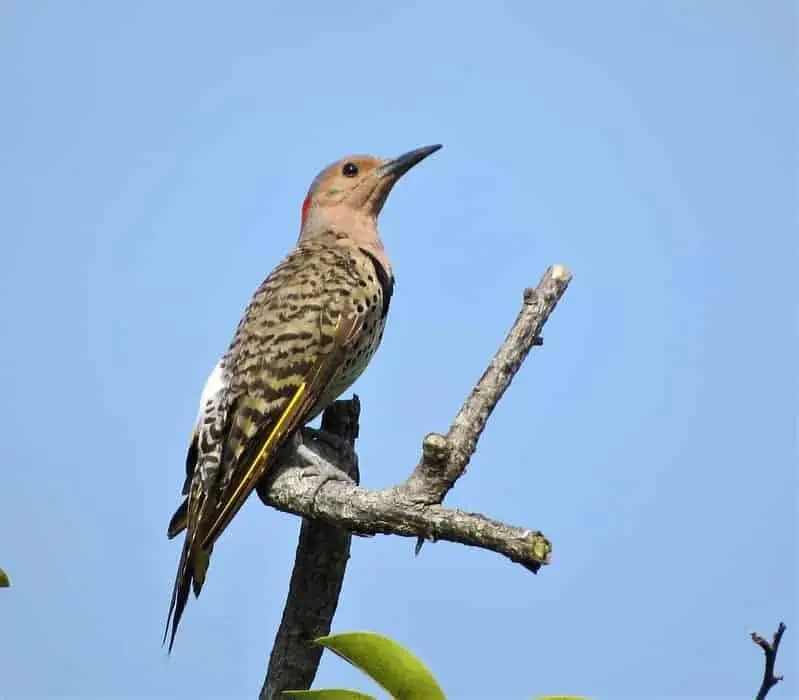
Wingspan
21.3 inches
Weight
6 ounces
Life Expectancy
9 Years
Diet
Insects, seeds, nuts & fruit
Northern Flickers are large birds and have gray-brown feathers with black marking on their backs and black spotting on their underbellies.
Northern Flickers are widely recognized for the bright white feathers near the rump, seen mostly while they are in-flight.
The feathers on their wings and their tail’s underside, tend to be yellow or red. There is also a notable black crescent shape near their breast.
The breeding season for this species is early spring to early summer and they nest in the holes in trees similar to other species.
Contrary to other woodpeckers, these birds dig through ground to look for insects. Northern Flickers can be easily recognized by their “wake-up” sounding call that repeats itself.
In Arkansas, you can find this species widespread near parks, suburbs, wet areas, and marsh edges.
8. Red-headed Woodpecker
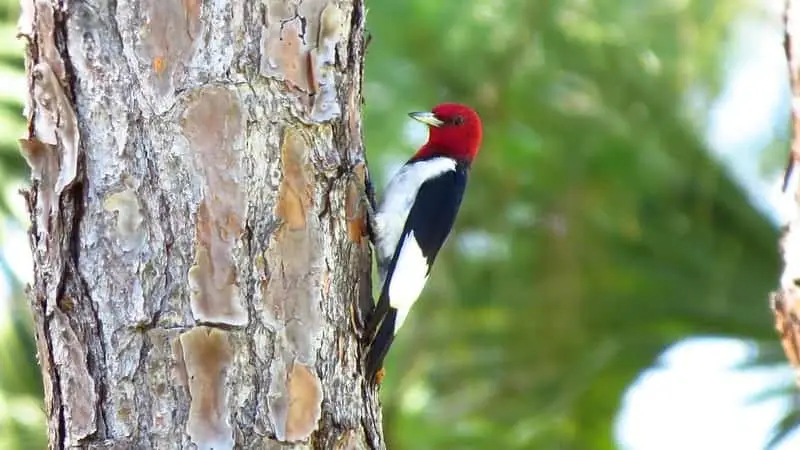
Wingspan
16 inches
Weight
2.5 ounces
Life Expectancy
9 Years
Diet
Insects & Berries
Red-Headed Woodpeckers are medium in size and are named after their brilliant red colored heads.
Their bodies, however, are white with the exception of their dark colored wings.
The number of Red-Headed woodpeckers have declined due to a loss of habitat, but they have been known to visit backyard bird feeders.
They can be versatile in making their homes among woodlands, forests, and orchards. They like to live in dead trees near the ground for foraging, though they don’t excavate for insects.
This species prefers to capture insects in mid-air. Mates will often try to attract each other with a “hide and seek” type game near tree stumps. This species has many calls, but can be identified by its most common ‘tchur’ sound.

More Articles.

If you’re thinking about taking your child birdwatching, the most important thing is having equipment

How to attract Quail to your yard?
Attracting quails to your yard might be easier than you first anticipate. These naturally shy
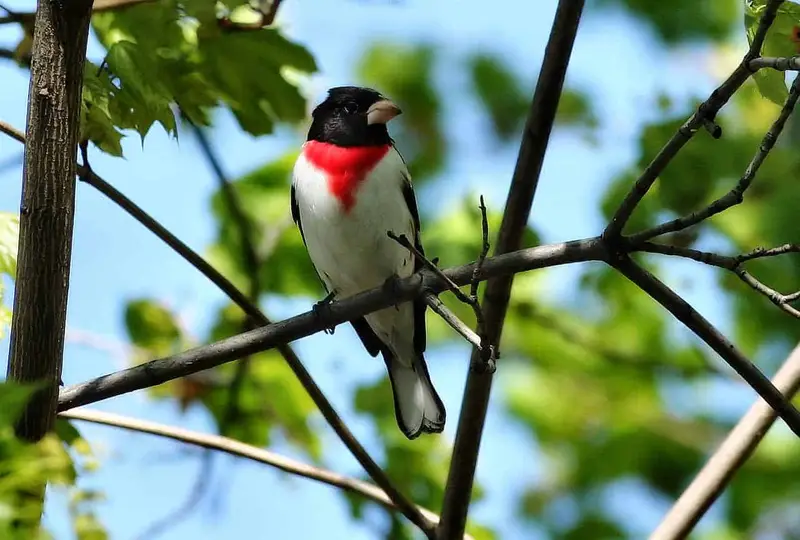
How to Attract Grosbeak to your Yard?
Grosbeak are a medium sized bird that is known to spend time visiting a great

About Us
We are avid bird-watchers who recently retired, allowing us more time to travel the world. Fortunately, we have managed to visit numerous countries around Europe, Asia, and America. Watching and photographing birds has been a passion for many years and we are making the most of the extra time on our hands!
